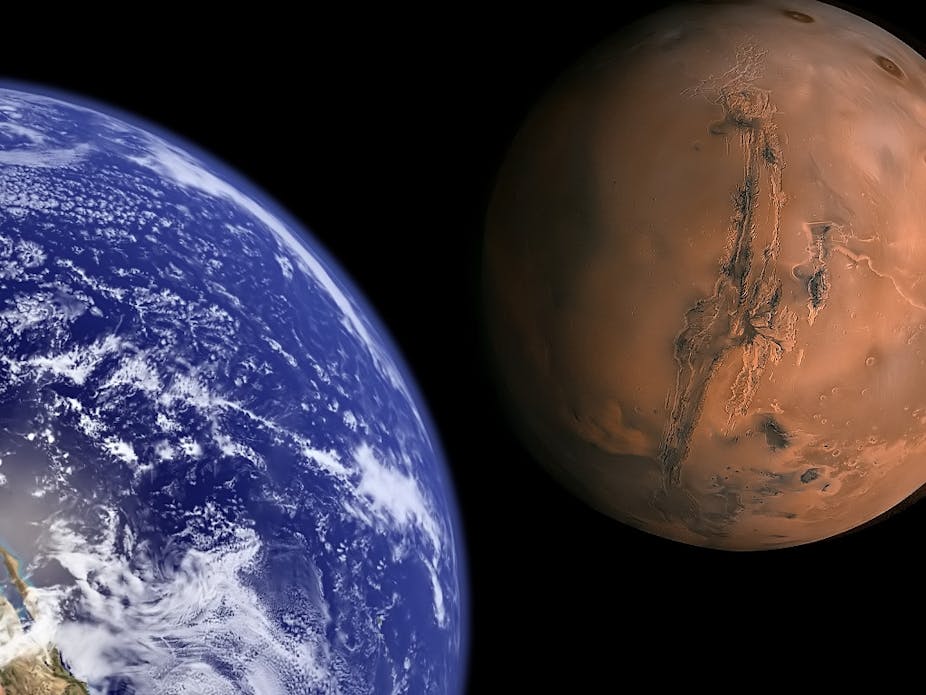Four planets – Mercury, Mars, Jupiter and Venus – will be aligned at dawn tomorrow. What does this mean? Should we be running for the hills?
You’d be forgiven for thinking so. A search on Google or YouTube for “planetary alignment” reveals myriad “information”: NASA reports, newspaper articles, astrologers, astronomers, conspiracy theories, survival guides and a few hoaxes.
The disaster film 2012 turns up remarkably often.
In this case, rational thinking isn’t helped by the fact the alignment coincides with (gulp) Friday the 13th.
So, hysteria aside, what’s actually happening out there?
Mercury, Venus, Mars, and Jupiter will be grouped together in the predawn sky, and will be visible from almost anywhere on Earth.
So how close will the planets appear to be to each other?
Mercury, Venus and Jupiter will appear to be within two degrees of each other, with Mars six degrees from its planetary compatriots. For comparison, the sun and moon are half a degree in size, so this alignment is rough at best.
The combined mass of these planets is more than 300 times that of Earth and some claim the combined force of the planets exerts an extraordinary pull on Earth and everything on it.
However, each of the planets is a vast distance away from us, a distance that’s measured in tens or hundreds of millions of kilometres.
This dilutes their gravitational pull to a negligible amount. The Moon exerts a far greater force on Earth than these planets, as seen by the ebb and flow of the tides.
It’s worth remembering that alignment of two planets occurs several times a year, and while alignments of three or more planets are not common, they aren’t exceptional.
(It’s worth noting that a similar planetary alignment actually occurred in 2000 without dire consequences, and millions of similar alignments have occurred over the 4.5 billion year history of Earth).
To the unaided eye, the aligned planets will look just like four stars, just above the eastern horizon.
The alignment doesn’t bring the planets any closer to Earth, so a telescope will be needed to see them in detail. A small telescope should reveal the crescent of Venus and the moons of Jupiter, discovered by Galileo with the most primitive of telescopes centuries ago.
So tomorrow, and for the next month, early risers will see the alignment in the pre-dawn eastern sky.
While not as spectacular as movie CGI, or as funny as the jittery ramblings of unhinged cranks on the internet, each of these points of light is a real world.
Seeing the alignment is worth getting out of bed for (but don’t lose any sleep over it).

